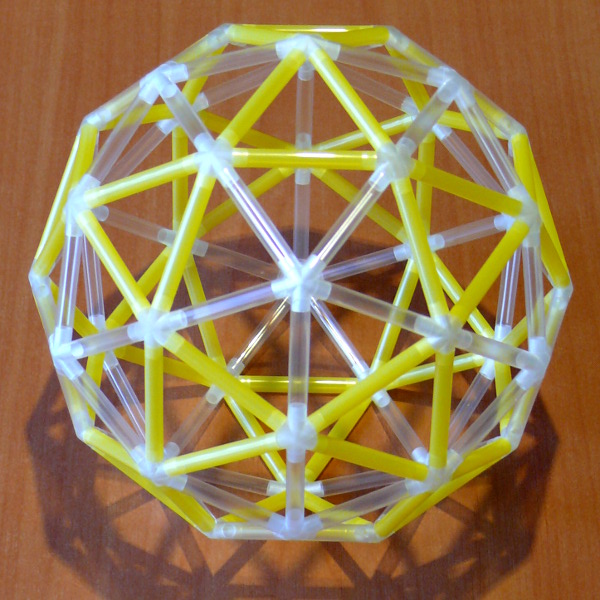
A sphere is a shape that may not seem constructible from a network of nodes and edges at first glance, but if we are willing to allow a construction that only approximates a perfect sphere, it becomes achievable. In practice, such a construction is called a "Geodesic Sphere". The network of a geodesic sphere has all vertices at the same distance from the center, and only the density of this network, determined by the number of evenly distributed vertices, dictates how close the construction is to a perfect sphere.



A geodesic sphere can be derived from any regular polyhedron by "dividing" each of its edges into an equal number of shorter edges with vertices equidistant from the center of the shape, and in the same plane as the original edge. The newly created vertices can then be used to create new edges, or rather faces, by connecting them. New edges can be divided in the same way again. This may sound complicated. It's easier to imagine that we break each edge of a dodecahedron in half and gently bend it outwards from the body. Then we simply connect these neighboring "breaks" with new edges, and the geodesic sphere is complete. This process can be repeated until an acceptable level of "roundness" is achieved. While any polyhedron can be used as the starting shape, the one with the highest number of faces is best suited for maximum regularity. This happens to be the dodecahedron, which we can already consider as the starting geodesic sphere with an edge "divisor" of 1. Since its faces are triangular, we can consider them as ideal facets for division. The larger the integer divisor, the more spheres we get, but for a start, 2 is sufficient, as no additional vertices need to be generated inside the facets for this divisor.

When generating a geodesic sphere with a divisor of 1 (dodecahedron), all edges and nodes are the same. With a divisor of 2, there are two types of edges (the second type is 1.1308 times longer than the first) and two types of nodes. The construction can then be easily assembled by connecting 60 basic edges into equilateral triangles, which are then joined into pentagons by overlapping vertices. 5 triangles form one pentagon, and each triangle will be part of three pentagons. Pentagons are then complemented with five edges 1.1308 times longer. The assembled model in the photograph has equilateral triangles in yellow and supplementary (longer) edges in transparent. This applies to a divisor of 2. For a divisor greater than 2, there will be more types of parts and the process will be more complex. A geodesic sphere created by an even division of the edges of a dodecahedron can be easily split into two hemispheres along the newly created edges. This creates two hemispheres. In the photograph of the assembled model, they are the yellow ones. This is extensively used in projection when there is a need to utilize its excellent "vaulted" properties.

